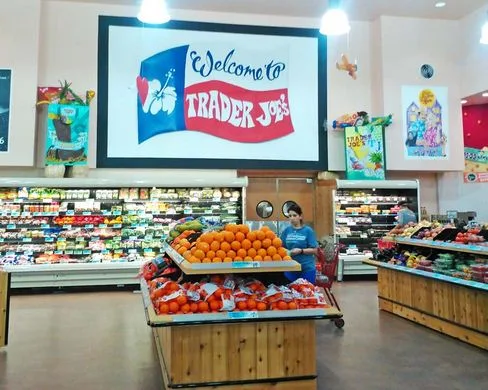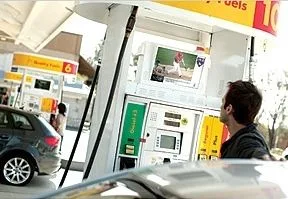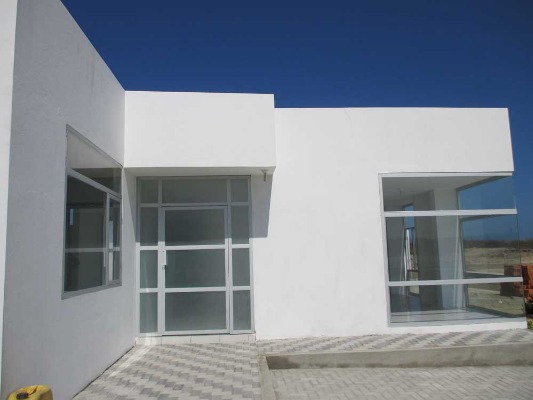After years of living overseas, an expat goes home and sees the U.S. with new eyes
By Jonathan Look
In 2011, at 50, I took early retirement from my job as an air traffic controller, left Texas and began traveling the world. Since then, with the exception of a few short visits back to see family, I’ve been hopping from bases as diverse as the Chiapas Highlands of Central Mexico to my current home on the banks of the Mekong River in Southeast Asia. Last summer, I returned to the U.S. for a month-long road trip from Maine to Texas and it made me see America with new eyes.

Angkor Wat: Another fallen civilization.
That’s a nod to Marcel Proust, who famously said, “The real voyage of discovery consists not in seeking new lands but seeing with new eyes.” With those words in mind, I wanted to see how my perspective had changed about the land I still call home.
Wandering the World’s Greatest Cities
During the last five years, I have learned the meaning of hospitality by living with some of the world’s poorest people in indigenous villages on the Laotian border of Southern China. I have seen first-hand how fragile once great civilizations can be while hiking the ruins of Palenque, Machu Picchu and Angkor Wat. I have wandered many of the world’s greatest cities, from perspectives as different as top-floor penthouses and crowded slums.
I have always known we Americans are a patriotic lot, but I hadn’t really noticed before the extent to which it is in such open display.
Ironically, even with all my traveling, it was returning to explore America again that made me a bit wary. I was excited to be able to show my British partner, Sarah, the part of the world where I grew up, but was also a bit concerned about how seeing things through a new lens would affect my view.
First Stop, Crossing the U.S. Border
After a stop in Canada, we decided to start our U.S. journey at sleepy Fort Kent, Maine because it’s the northernmost point on iconic Highway 1. What would normally have been a simple two-minute border crossing for me was complicated because I was traveling with an “alien.”

U.S.-Canada border crossing in Maine.
I couldn’t tell if it was because the United States has recently grown more wary of foreigners or if the agents manning the border that day were bored, but the Immigration and Naturalization Service (INS) folks decided to do a thorough inspection. This involved innumerable questions, but most were like, “Why does your passport have so many stamps?” “Do you have Ebola?” “Why are you traveling together?” And “You are British and you are American; how did you two meet?” It was all very polite and professional, but I got the feeling they were trying to trip us up or perhaps catch us in a lie.
They left us inside the INS building while they inspected our car. Through thick plate glass windows, I could see the INS agents thumbing through the paperwork in the glovebox, lifting the hood, looking under the car with little mirrors, lifting the rear hatch and then opening each piece of our luggage. It took the better part of an hour, but we must have passed all the tests because eventually we were on our way.
I had never been chosen for “secondary inspection” while crossing a border anywhere in the world before and to be honest, it weirded me out a little. I wasn’t expecting a parade on my arrival to the U.S. and I know the INS has a ridiculously tough job, but as a first impression, I can see how new arrivals can get put off.
On this side of the border, the first thing that struck me (besides the breathtaking scenery) was the proliferation of flags. They were everywhere. It seemed that there wasn’t a peopled place anywhere out of sight of Old Glory waving on a pole, stuck to a car or painted on some surface.
A Love of Flags Hasn’t Flagged
I have always known we Americans are a patriotic lot, but I hadn’t really noticed before the extent to which it is in such open display. Was perhaps all this flag-waving intended to set us apart from the rest of the world, or perhaps a way to mask a fear of terrorism? All I know for sure is that as the trip went on, from far north to far south, flags were almost as much a part of the landscape as the clouds and sunshine.
Ironically, it seemed that in many of the less-well-kept or more impoverished areas there were even more flags than other places. It was as if they felt doubling down on their patriotism could somehow raise them out of poverty.

After the third world, you can’t beat U.S. highways.
From the backwoods of Northern Maine to the tangle of freeways in Houston, it was, however, a pleasure to be driving on good roads. In third world countries, you can learn to get used to always being on defense while driving on bad roads, but after a while, it takes a toll on you. With some variability from state to state, the U.S. roads were well marked, wide shouldered and smooth. Also, it was a surprise to see people actually driving politely, defensively and following the rules.
Before I started my global travels, good public roads and trained drivers were something I’d always taken for granted. On this trip, being able to travel at reasonable speeds without being subjected to bone-jarring bumps and potholes every few yards, was a luxury.
What I Became Thankful For
I cannot begin to say how many times I noticed, and was thankful for, the regulations here that make life so much smoother. When you spend most of your time in places where drinking the wrong water can mean a trip to the doctor or a moment’s inattention could result in falling into an open sewer, you learn how great it is not to have those worries.
Drinking water from the tap, restaurant and meat inspections, building regulations and safety rails are all things I promise not to take for granted again. America is often accused of being a “nanny state” and I suppose some of that reputation is deserved. You can’t legislate the risk out of life, but as a person who is constantly bashing his head on low doorways and occasionally tripping down unlit stairways, I can tell you that having some minimum safety standards enforced is a wonderful luxury.

Why does healthy food cost more in the U.S?
You would think so much choice as a visiting consumer would be a luxury as well, but I am not so sure.
During much of my time away from America, I have been living in, and visiting, places where people don’t have nearly as many options as here — or as much opportunity for consumption. At one point during this trip, I sadly realized that some of the poorest people I know have never been “shopping” (that is, searching for a purpose to unload spare money); at best, they’re only able to purchase a few necessities.
Too Many Choices?
Having too much choice is definitely a first-world problem, but I have to say it was disorienting to have 30 different kinds of breakfast cereal at the supermarket or 50 cell phone models and service plans to choose from at the electronics shop. Trying to constantly pick among the supposedly “best” products, options, add-ons, insurance and warranties can get overwhelming.
Sarah actually felt this a bit, too. One time, when we were at one of those huge outlet malls, she found me and said, “Let’s leave, I can’t stand it, there are just too many things to choose from.” It was the same in restaurants with menus three inches thick and dozens of beverages to pick from. Sometimes, I’ve discovered, there is luxury in not being overwhelmed by too many choices.
It was disillusioning to discover that eating healthy in America can be budget-busting expensive.
Although “fast food” and “fast casual” were easy to find, healthy options seemed virtually nonexistent. We shopped a little in grocery stores and were distressed to find how expensive unprocessed fruits, nuts and vegetables were.
Intuition would tell you that the less preparation, packaging and processing that goes into food, the less it should cost, but apparently that’s not the case. Living in Laos, we can walk five minutes to our local market and get straight-from-the-farm eggs, meats and vegetables for just a dollar or two a meal. To get unprocessed food in America, it seems you have to go either to an expensive, upscale grocery chain or a hipster weekend market.
A Consistency Among Americans
The road trip was a great opportunity to make new friends, renew old relationships and catch up with family. It was incredible reuniting with Americans we’d met while they were traveling overseas and staying in their homes, getting the latest news in person from old friends and even striking up conversations with strangers in grocery store lines.

The U.S. even has tvs on gas pumps.
There was something almost universally consistent among them — an almost nervous energy, and in many, a kind of perverse pride in how incredibly busy they were. It was as if they thought they might be judged negatively for taking time during the day to simply enjoy themselves.
People also seemed to be a bit more on edge and fearful than I remembered, almost as if they were afraid that some force was going to do them harm, take away what they were striving for or somehow unalterably change their daily routine. You could see it reflected in, or perhaps caused by, the constant stream of news and information that they were exposed to. There were even commercial messages disguised as news emanating from tiny TV screens embedded in the fuel pumps at gas stations. Almost all the news I saw was sensational, but very little of it had significance to daily life.
Maybe it is just the places I have lived, but the rest of the world seems less obsessed or threatened by faraway events they have no control over. They are more focused on life with their family or neighbors than the latest hypothetical threat from faraway places.
Everyone had opinions, but some I couldn’t comprehend.
I remember one conversation with a great friend about the worldwide refugee problems and especially how he feared the Central Americans coming to the United States. I pointed out that they were, for the most part, desperate people seeking to escape poverty and violence in their home country and that he had little to fear from them. I also pointed out that under similar circumstances he would probably cross borders to seek a better life for himself and his family, too. I will never forget his reply: “You know Jon, you have been away in Southeast Asia too long. You have no idea how bad things can get.” I wanted to laugh, but decided not to press it.
The Ugly American Stereotype Is Wrong
If you follow the news about the United States from overseas, it’s possible to get the impression that Americans are among the most self-centered, bigoted and least hospitable people on the planet. But when you visit the United States and actually interact with people on a personal basis, I found, the truth is just the opposite.
I just wish the more of my countrymen and women would make more of an effort to get their kind voices out. Everyday, Americans are quietly doing wonderful things to make someone’s life, their neighborhood or even the world a better place; they need to do a better job getting their stories told. Patience, thoughtfulness and empathy are things to be proud of, not weaknesses. I think it is time the world saw more of what I know are real Americans.
What I’m Confident About Now
While writing this piece, I became aware that maybe I haven’t changed as much as I think I have. I am still the untidy mix of contradictory opinions and values that most Americans are. I can’t be sure if, after having been away for a while, I now see America more clearly or if I’ve just developed a different set of prejudices and opinions. One thing I do feel confident about: hidden behind all of America’s confidence and bravado lurks a remarkable, but somewhat normal country, that is still struggling to find its identity.
Although I am not ready to return “home” on a permanent basis, knowing that hidden vulnerability makes me love America more than ever.
___________________
Jonathan Look Jr., lives in a house overlooking the Atlantic Ocean, not far from Lisbon, Portugal. When he is not traveling, running marathons or walking across countries you can find him making photographs, writing and sometimes in the kitchen making Sarah her favorite meals. You can find more information on his blog, LifePart2.com.@Jonathan_Look
Credit: Next Avenue, www.nextavenue.org





















